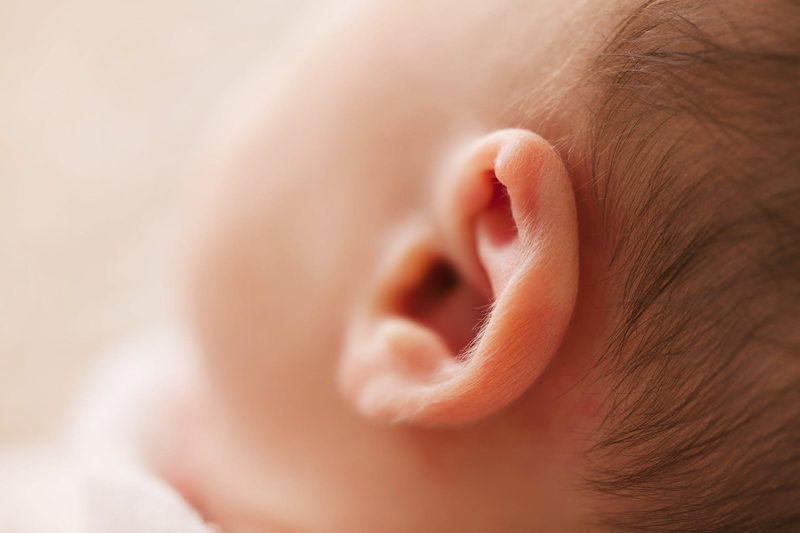The innovations of hearing loss technologies

 The first ‘hearing aids’ if you could call them that, were hearing trumpets. They were large and cumbersome - like the trumpet on early gramophones. They worked by catching the sound waves in the large trumpet and channelling them through the narrow end to your ear. By catching a wider range of sound waves, it served as amplification and the listener could hear at least a little better. A simple way of testing what I mean is – cup your hand around your ear and direct it to a sound source. You will notice a distinct amplification of the sound even from something as small as your hand. While this may help you understand, it does little to improve the quality and cannot deliver sound in frequencies which you cannot hear.
The first ‘hearing aids’ if you could call them that, were hearing trumpets. They were large and cumbersome - like the trumpet on early gramophones. They worked by catching the sound waves in the large trumpet and channelling them through the narrow end to your ear. By catching a wider range of sound waves, it served as amplification and the listener could hear at least a little better. A simple way of testing what I mean is – cup your hand around your ear and direct it to a sound source. You will notice a distinct amplification of the sound even from something as small as your hand. While this may help you understand, it does little to improve the quality and cannot deliver sound in frequencies which you cannot hear.Hearing aids improved from the ear trumpet. They became analogue instruments, often with cumbersome boxes to be worn somewhere on the body. A microphone captured the sounds, took it through wires, to the hearing box, amplified it and then delivered the amplified sound through a tube, into the ear canal. Once again, for mild hearing loss this solution provided considerable benefit, but users were frustrated by the boxes, the cords but worse still they amplified all sound including background noise, at the same level often making it even harder to hear. Wearers were frequently embarrassed by having to wear the aids and a stigma of hearing aids developed.
Over the decades hearing aids became smaller, more powerful and had the ability to filter for loud noise. But they were still visible and embarrassing, often gave high pitched (acoustic) feedback, and often delivered little benefit to wearers particularly for those with a moderate to profound hearing loss.
However, computer and digital technologies meant more programming could be done on a smaller scale allowing hearing aids to be smaller, yet retain their power. Microphones became smaller, and could be directional and filter out background noise. More importantly hearing aids could be programmed to help specific types of hearing loss – raising volumes in frequencies needed while lowering them in others. They can even recognise a frequency which the wearer can no longer hear and change it to one which they can.
But even with all thi,s once your hearing is gone no amount amazing hearing aid technology can deliver sound. It’s like putting glasses on a blind man. It doesn’t matter how strong they are, he will still not be able to see. And so too, for many people, the best hearing aid technology in the world will not allow them to hear.
For people like me, there is a cochlear implant. What an implant does is take the sound, convert it to an electrical impulse and delivery it straight to the hearing nerve, thus by-passing the damaged hearing mechanism. For many people, an implant has returned hearing often better than they remember (that’s me!)
At first Cochlear implants, like hearing aids, were big and cumbersome. However, getting such good sound back was so important that early users didn’t seem to develop a stigma about wearing ioneIn fact most were proud to show it off. These days a cochlear implant processor is fairly small, about the size of a behind the ear hearing aid.
Not all hearing loss is the same. There is no one size fits all solution. The new dimension hearing technologies allow hearing aids, cochlear implant processors as well as other implantable devices to be personalised to specific hearing loss. They automatically adapt to the wearer’s needs in different environments. They are small, discrete and deliver excellent hearing solutions.
You Should Also Read:
The stigma of hearing aids
Using a hearing aid
How to choose a hearing aid

Related Articles
Editor's Picks Articles
Top Ten Articles
Previous Features
Site Map
Content copyright © 2023 by Felicity Bleckly. All rights reserved.
This content was written by Felicity Bleckly. If you wish to use this content in any manner, you need written permission. Contact Felicity Bleckly for details.


